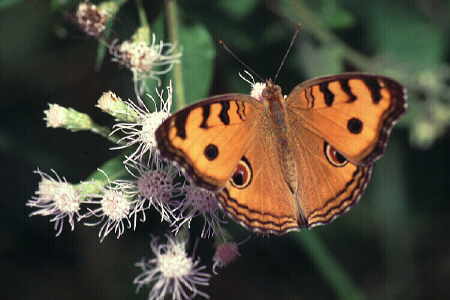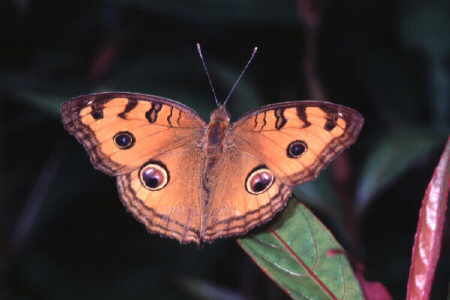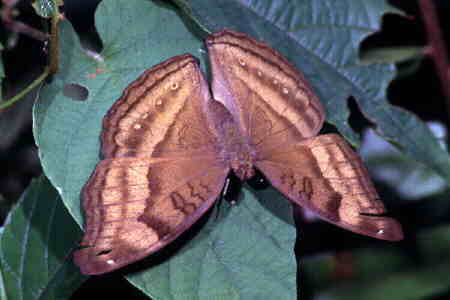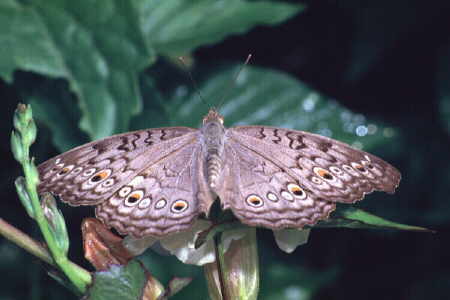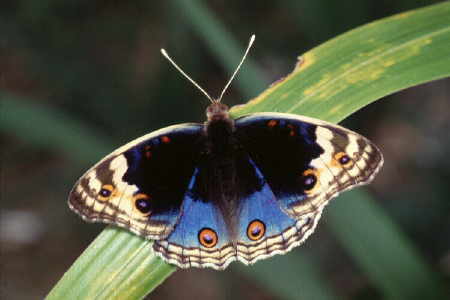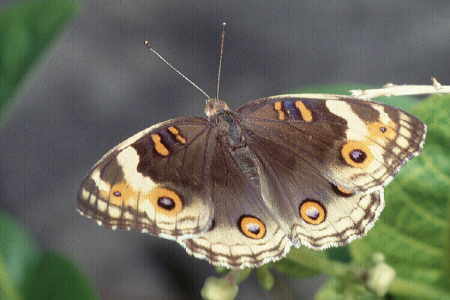The Perlis Pansy and other Pansies
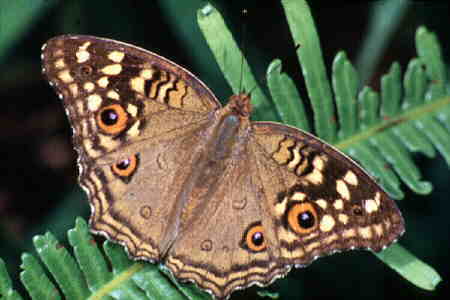 I REFER to the article “The Perlis Pansy Comes to Town” by Basri K. Jemadi
and Hugh Storey, reporting on their sighting of
Precis* lemonias in January-February (Malayan Naturalist, August 1987).
I REFER to the article “The Perlis Pansy Comes to Town” by Basri K. Jemadi
and Hugh Storey, reporting on their sighting of
Precis* lemonias in January-February (Malayan Naturalist, August 1987).
The Perlis Pansy has indeed come to town and appeared to have made a
home for itself at Bukit Kiara, Damansara, the site of our future national arboretum**. The
first time I saw this butterfly was in mid-June 1984, during a Sunday morning nature walk
led by Dr Kiew Bong Heang to Bukit Kiara and I managed to take several pictures of it.
(See how rewarding these MNS outings can be!).
Being new to the hobby of butterfly-watching at that time, I could not
identify the species. Later, from the few shots that I got, I made it
out to be P. lemonias. And was I surprised to find that it was P. lemonias!
W.A. Fleming’s “Butterflies of West Malaysia and Singapore”
gives the distribution of this species as Perak, Penang, L.K. (i.e. the Langkawi islands and
Kedah, north of the Kedah River, and Perlis). “The Butterflies of the Malay Peninsula”
by A.S. Corbet and H.M. Pendlebury states that P. lemonias “is almost confined to
the Langkawi Islands and north Kedah... and this species is not found south of Penang.”
Excited by this discovery, I wrote to Lt. Col. J.N. Eliot at the end of
1984. He gave this information in his reply:
“Butterflies tend to go through cycles of abundance and scarcity, and
the limit of their range expands and contracts depending upon small and little-understood
changes in environment, climate, etc. Most Precis species feed as larvae on weeds of
cultivation and secondary growth; in Hong Kong the food plant of lemonias is
Lepidagathis incurva (Acanthaceae). This habit makes their spread comparatively easy
when conditions are favourable.”
So we see the Perlis Pansy has migrated south from Perlis, Kedah and Penang
to Perak, Pahang and the Klang Valley. Whether it will move further down to Johore and across
the Causeway remains to be seen. (Johore and Singapore have their own endemic Precis
species, P. hedonia.)
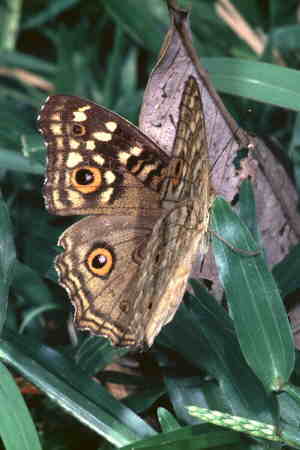 Two weeks after that MNS outing, I returned to Bukit Kiara to get more
pictures of the Perlis Pansy and I found many of the species in an overgrown area in this old
rubber estate*** (near some old sheds that were being demolished). I made a third trip to the
area in November 1984 and found an even greater number than on the two previous occasions. This
colony of P. lemonias was thriving very well.
Two weeks after that MNS outing, I returned to Bukit Kiara to get more
pictures of the Perlis Pansy and I found many of the species in an overgrown area in this old
rubber estate*** (near some old sheds that were being demolished). I made a third trip to the
area in November 1984 and found an even greater number than on the two previous occasions. This
colony of P. lemonias was thriving very well.
However, I have not gone back to Bukit Kiara since then and I understand
from workers who were then clearing the place that the area is off-limits.
If the Perlis Pansy were to bring with it the pronounced dry spells of
Perlis/Kedah to the Klang Valley, we could perhaps see an interesting characteristic of the
Precis species, i.e. the occurrence of seasonal variation. What we usually encounter are
the wet-season forms; the dry-season forms, described as having more sharply angled wings and
cryptic patterns resembling a dead leaf on the underside, occur only during the dry season of
the northern region from December to February.
Another Pansy butterfly – the sexually dimorphic P. orithya
(the Blue Pansy) – was also plentiful at Bukit Kiara, in a clearing along the foot path
leading from the old labour line into the estate. Other Precis species occurring in
Peninsular Malaysia are P. iphita (the Chocolate Soldier), P. atlites (the
Grey Pansy) and P. hierta, which is found only in Langkawi.
(Published in the Malayan Naturalist, Vol 41 Nos 3 & 4, May 1988. This was sent as a letter
to the editor but was instead used in the PhotoFeature section.)
* All species in this group of butterflies have now been placed in the
genus Junonia.
** That area where we had the nature walk is now occupied by
a park and a large golf course. The national arboretum, I have been told, occupies a
different part of Bukit Kiara.
*** Bukit Kiara was covered by old rubber trees at that
time. Most of Damansara, in fact, was covered by rubber estates and oil palm plantations
at one time, but these are progressively making way for housing estates and townships to
accommodate the growing population of Kuala Lumpur and the Klang Valley.
|







